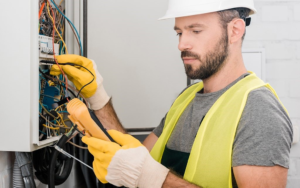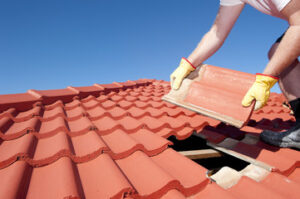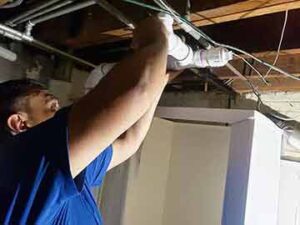Electrician Jacksonville NC is responsible for installing and maintaining electrical equipment and systems and ensuring that they comply with government safety regulations.
A strong resume should highlight an electrician’s ability to troubleshoot complex electrical problems and find solutions quickly. It should also demonstrate their attention to detail and ability to work with others.

An electrician maintains, repairs, and installs electrical wiring, equipment, and fixtures. They may also provide technical advice and expertise regarding electrical systems. They work on industrial equipment as well as commercial and residential structures.
An effective electrician needs excellent communication skills. They interact with a wide variety of people, including other electricians, managers, homeowners, and architects. They must be able to explain complex processes in a way that others can understand. This requires clear verbal communication and good reading comprehension.
Other essential qualities of an electrician include resilience and adaptability. The job can be physically demanding and the electrician will need to be able to keep a positive attitude in the face of challenging tasks. They will also need to be able to adjust to changing conditions, such as when they are working on new technologies or systems.
They must also be able to follow safety standards and regulations when working on electricity systems. This is a crucial part of their role, as it ensures that they and any other workers in the field are kept safe from electrical hazards. Electricians who are not able to follow safety protocols could end up injuring themselves or putting those around them at risk.
Problem-solving skills are another necessary skill for electricians to have, as unexpected issues often arise on the job. For example, an electrician might need to figure out how to install a new fixture that is not listed in the blueprints or they may encounter a wiring problem. They should be able to think on their feet and find solutions quickly in order to continue the project without wasting any time.
It is also important for electricians to have excellent math skills. They will need to be able to calculate currents, voltages and cable lengths as they work. They will also be responsible for reading and interpreting schematics, which can be difficult if they do not have strong math skills. In addition, they must be able to use measuring tools correctly and accurately. For example, if they are running Romex wires (the flat, white plastic-sheathed cable commonly used in residential wiring) from joist to joist and then merging them at the service panel, it is important for them to do so in a neat and organized manner.
Education and Training Requirements
An electrician is a highly skilled tradesperson who plays an essential role in modern infrastructure. The work requires a high level of maths competency to decipher technical plans, physical fitness for prolonged periods standing, kneeling and climbing, as well as an eye for detail to detect potentially dangerous electrical faults. It also involves regular updating of skills and training to keep up with changes to the industry’s codes. The best way to get started in the profession is to shadow a professional and attend a trade school program that includes practical experience.
An apprentice-level program will combine classroom and on-the-job training for several years, during which you’ll earn a wage and become eligible to apply for a full-time position with an electrical contracting company. Some programs are offered through trade schools, others by independent electrical contractors or Associated Builders and Contractors. Others are run by a Joint Apprenticeship and Training Committee (JATC).
The first step is to complete a certificate or associate’s degree program in an electrical trades field. This can prepare you to move straight into an apprenticeship, or can act as a stepping stone toward a bachelor’s degree in the same subject. Then, depending on the state you live in, you’ll need to pass a licensing exam and obtain liability insurance before starting work.
A license will usually be issued by a government body, such as the New York Department of Labor, or a trade school. The exam will cover topics such as electrical codes, safe working practices and how to install specific products. Licensing requirements vary from state to state, so it’s important to research the laws in your area before committing to any program.
Once you have a license, you’ll be able to carry out a wide range of tasks including installing wiring and lighting, maintaining existing systems, upgrading electrical components and responding to emergency calls. You can also specialise in certain areas, such as renewable energy or HVAC systems. Specialising will help you focus your career goals and may also increase your earning potential, due to the scarcity of experts in these fields.
Working Conditions
The working conditions for electricians vary depending on the type of work they do. Service electricians are typically tasked with responding to requests for isolated repairs, while construction electricians focus on larger projects that involve installing new wiring in homes or businesses. Both types of electricians may be exposed to dangerous situations due to the use of power tools and electrical systems, which requires adherence to strict safety protocols. This can include wearing insulated gloves and safety glasses, as well as adhering to all other OSHA guidelines.
Some electricians choose to work as independent contractors while others may work in a company with a union presence. In either case, they may be required to liaise with clients both prior to starting a job in order to determine its scope and afterwards to invoice and secure payment. In addition to this, electricians are often required to work at night or on weekends as needed when responding to emergency repair calls.
Electricians can be employed in a range of settings, from power plants to industrial manufacturing facilities. In these settings, they may be required to wire or unwire large motors or troubleshoot equipment with high voltages. They may also be asked to work in tight spaces or inclement weather conditions.
As more people opt for alternative energy sources like solar or wind power, electricians are expected to be in high demand. They are responsible for the installation of these new energy systems, as well as hooking them up to the grid and residential or commercial buildings.
Many electricians find that working on call is an important aspect of their job, as emergencies can occur at any time. In some cases, this can mean that they are required to travel long distances in order to reach a client’s site. This can be challenging for those with family and other commitments that require a stable home base. However, if you are willing to accept these conditions, this career can be highly rewarding. It can also offer a great deal of flexibility and autonomy for those who prefer to be their own bosses.
Salary
Electricians have the potential to earn impressive salaries. Their annual earnings are influenced by numerous factors, including geographic location, level of experience, and specific industries in which they work. For instance, electricians working in the commercial and industrial sectors often earn wages that surpass the national average. This is due to the complexities and demands of these work environments.
Aside from their salaries, many electricians enjoy a variety of other benefits that make their jobs even more rewarding. These benefits may include allowances for tools and uniforms, which minimize out-of-pocket expenses. They may also be eligible for health insurance and retirement contributions. Furthermore, some employers offer profit-sharing plans to incentivize employees for their efforts and successes.
Licensed electricians who work in residential construction tend to have lower earnings than those who specialize in utility installations and repairs. However, the more experienced and specialized an electrician is, the higher their salary can be.
Specialized electricians often have the most lucrative career prospects, especially if they focus their efforts on high-demand areas of the industry like solar power and electrical vehicle charging systems. These specialized skills, coupled with an outstanding work ethic, can propel an electrician’s earning potential far above the national average.
The geographical location of an electrician can significantly impact their income. Urban areas typically have a higher demand for these skilled workers and pay them well. However, rural areas often have a lower demand for these professionals and pay them less. This is due to the difference in cost of living.
Residential electricians are the most common type of electricians, and their annual salaries tend to be lower than those in specialized commercial or industrial roles. However, their wages can still be competitive in high-demand regions of the country.
Line electricians, or line electrical workers, are responsible for repairing and installing the electricity transmission and distribution lines that run across towns and cities. They also ensure that the electricity produced by power plants makes its way to homes and businesses, and that it is distributed properly. They are commonly found outside and can be distinguished from interior wiremen, who work with the lower voltages utilized inside buildings.





